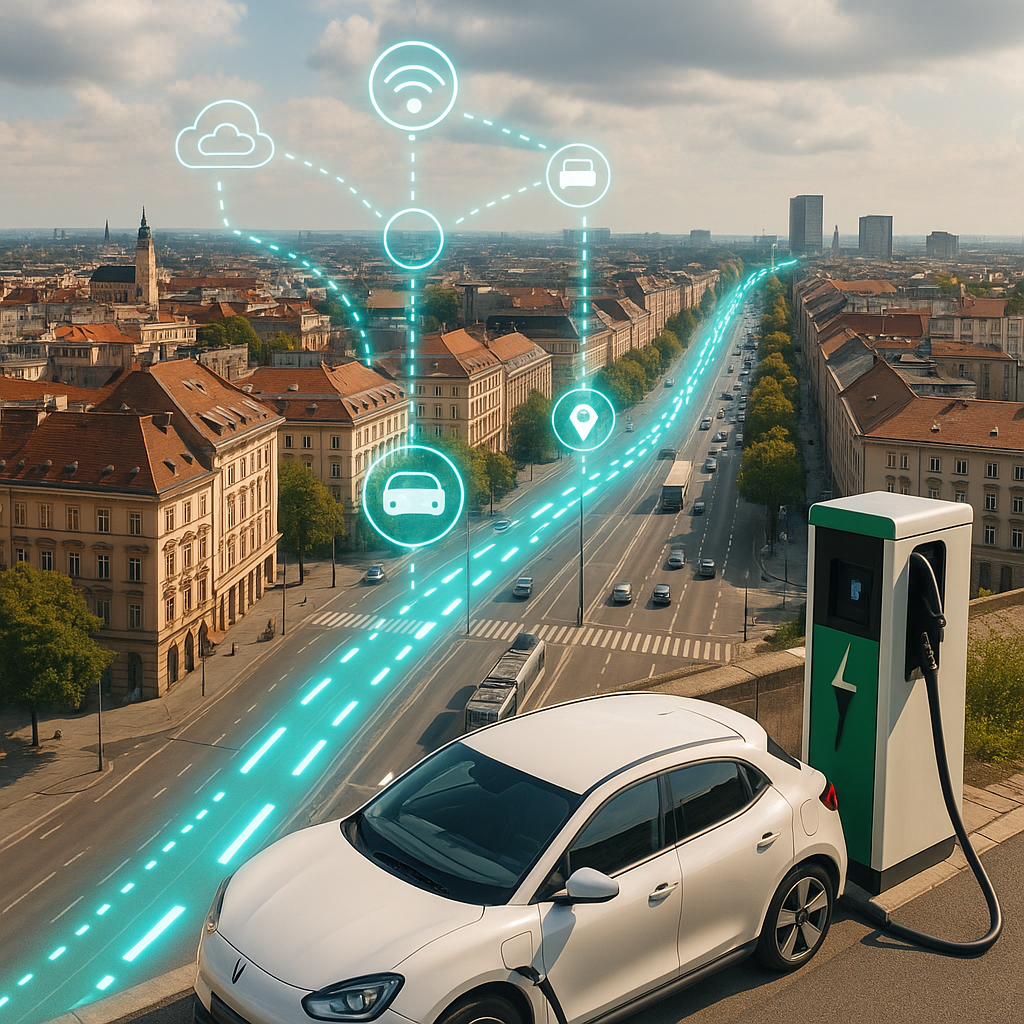Integrated IoT system can slash urban carbon emissions
While the results highlight the promise of IoT-driven integration, the authors caution that successful implementation will depend on careful policy design and sustained investment. They identify several key challenges: ensuring data quality and sensor coverage, overcoming interoperability barriers among devices and platforms, and addressing privacy concerns related to the continuous collection of mobility and energy data.

Urban centers striving to cut emissions and ease traffic congestion may have a new blueprint to follow. A recent study published in Future Internet presents an integrated Internet of Things (IoT) architecture that can make urban mobility more sustainable by combining real-time traffic management, green routing, and coordinated electric vehicle (EV) charging.
The study, titled “An IoT Architecture for Sustainable Urban Mobility: Towards Energy-Aware and Low-Emission Smart Cities,” introduces a layered framework designed to link vehicles, infrastructure, and energy systems through edge–cloud computing. By addressing both traffic efficiency and energy consumption, the researchers argue that the model can help smart cities reduce emissions and build more resilient urban transport networks.
Rethinking urban mobility for a low-emission future
The researchers state that while many cities have adopted partial digital tools for traffic monitoring or EV charging, these systems often operate in isolation, limiting their overall impact. The proposed architecture seeks to integrate these components into a single interoperable system capable of responding dynamically to real-time conditions.
The framework is organized into four layers. The perception layer gathers data from sensors in vehicles, roadside cameras, EV chargers, and environmental monitors. The network layer connects these devices using a combination of 5G/6G, cellular vehicle-to-everything (C-V2X), and IoT-friendly protocols such as MQTT and CoAP. Edge devices handle time-sensitive tasks like congestion detection, while cloud platforms manage large-scale optimization for routing and energy load distribution. At the top, the application layer delivers driver-facing apps, operator dashboards, and APIs for Mobility-as-a-Service providers.
The study underlines that edge–cloud coordination is essential to achieve the responsiveness required for urban transport, particularly as EV adoption rises and puts new demands on power grids. By running predictive algorithms for traffic and charging at both local and centralized levels, the system can guide drivers to less congested routes and stagger charging demand to prevent grid overloads.
Demonstrated gains in mobility, emissions, and energy efficiency
To test the architecture’s potential, the researchers created simulations using SUMO (Simulation of Urban MObility) coupled with recognized emission models (HBEFA and COPERT). The testbed was based on a mid-sized European city resembling Porto and assumed a fleet composition of 20 percent EVs, in line with EU 2030 targets.
The team compared three scenarios: a baseline using conventional routing, one with IoT-enhanced congestion-aware routing, and a third that added coordinated EV charging. The integrated system achieved clear improvements across key indicators. Average travel times fell by nearly 10 percent compared to the baseline, while CO₂ emissions per kilometer were cut by about 8 percent. EV energy consumption decreased by 5.5 percent. Importantly, coordinated charging reduced peak load at charging stations by 25 percent and improved their overall utilization by 12 percent.
These benefits were most pronounced during periods of moderate to heavy traffic and when EV adoption reached or exceeded 20 percent of the fleet. The study suggests that as EV penetration grows, integrating energy-aware routing and charging will become crucial for both reducing urban pollution and maintaining grid stability.
Policy and planning challenges ahead
While the results highlight the promise of IoT-driven integration, the authors caution that successful implementation will depend on careful policy design and sustained investment. They identify several key challenges: ensuring data quality and sensor coverage, overcoming interoperability barriers among devices and platforms, and addressing privacy concerns related to the continuous collection of mobility and energy data.
The study also notes that external factors such as weather, cold starts, and variations in driver behavior can influence real-world outcomes and need to be incorporated into future models. Moreover, the researchers recommend that cities integrate equity metrics into planning to ensure that the benefits of smarter routing and charging, such as shorter commutes and lower energy costs, are distributed fairly across different neighborhoods.
For policymakers and city planners, the findings underscore the importance of harmonizing mobility and energy strategies. Investments in high-quality sensor networks, open communication standards, and transparent governance frameworks will be critical to deploying such integrated systems at scale.
- FIRST PUBLISHED IN:
- Devdiscourse










